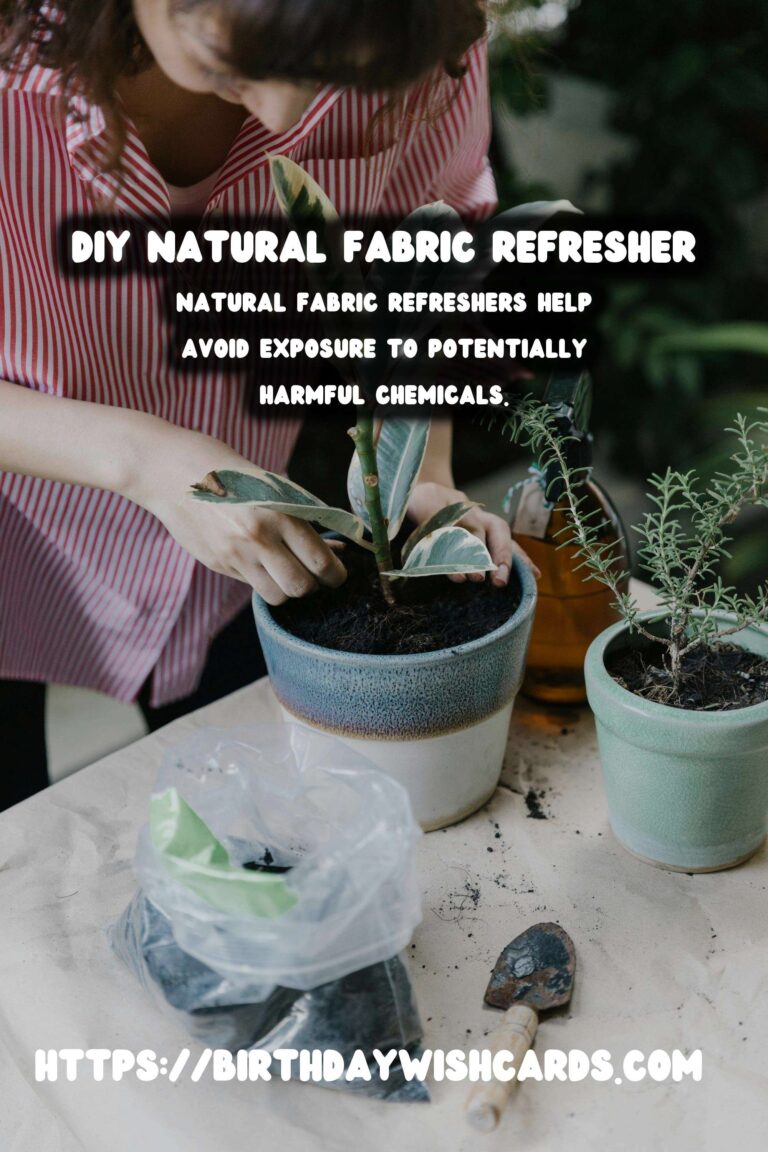
In today’s world, we are increasingly aware of the chemicals present in everyday household products. Fabric refreshers are no exception. Many commercial fabric refreshers contain synthetic fragrances and chemicals that can cause allergic reactions or harm the environment. Fortunately, there are natural alternatives that you can make at home. In this article, we’ll guide you through creating your own homemade natural fabric refresher, ensuring your home smells fresh without any harmful additives.
Why Choose a Natural Fabric Refresher?
Choosing a natural fabric refresher has several benefits. First, it helps in avoiding exposure to potentially harmful chemicals found in commercial products. Many of these chemicals can trigger allergies or respiratory issues. Second, natural refreshers are eco-friendly, ensuring that you’re doing your part in reducing environmental impact. Lastly, homemade options are cost-effective, as they usually require ingredients you already have at home.
Essential Ingredients for a Natural Fabric Refresher
Creating a natural fabric refresher is simple and only requires a few ingredients. The base of most natural refreshers is water, which acts as the solvent. Essential oils are key for adding fragrance and are known for their antimicrobial properties. Popular choices include lavender, lemon, and tea tree oil. To help disperse the oils in water, a small amount of alcohol (like vodka) can be used, as it evaporates quickly and leaves no residue.
Step-by-Step Guide to Making Your Fabric Refresher
Step 1: Gather your ingredients. You will need a spray bottle, distilled water, your choice of essential oils, and vodka.
Step 2: Fill the spray bottle with 1 cup of distilled water.
Step 3: Add 2 tablespoons of vodka to the bottle. This helps to blend the oils with the water.
Step 4: Add 10-15 drops of your chosen essential oils. You can mix and match oils to create a scent that you love.
Step 5: Secure the spray bottle lid and shake well to combine ingredients.
Step 6: Test the spray on a small, inconspicuous area of fabric to ensure it doesn’t cause any discoloration.
Step 7: Once tested, lightly mist your fabrics from a distance, allowing the mist to settle and refresh your space.
Tips for Using Your Fabric Refresher
When using your homemade fabric refresher, keep these tips in mind to ensure the best results. Always shake the bottle before each use to ensure the oils and water are mixed. Avoid saturating the fabric; a light mist is usually sufficient. Store the refresher in a cool, dark place to preserve the essential oils’ potency.
Conclusion
Making your own natural fabric refresher is a simple, effective, and environmentally friendly way to keep your home smelling fresh. By using natural ingredients, you’re reducing your exposure to harmful chemicals and supporting a healthier living environment. Try experimenting with different essential oil combinations to find your perfect scent. With this homemade solution, you can enjoy a naturally fresh home without the need for commercial products.
Fabric refreshers often contain synthetic fragrances and chemicals that can be harmful. Creating a natural fabric refresher is simple and requires only a few ingredients. Natural fabric refreshers help avoid exposure to potentially harmful chemicals. Essential oils are used for fragrance and have antimicrobial properties. Homemade fabric refreshers are cost-effective and environmentally friendly. 
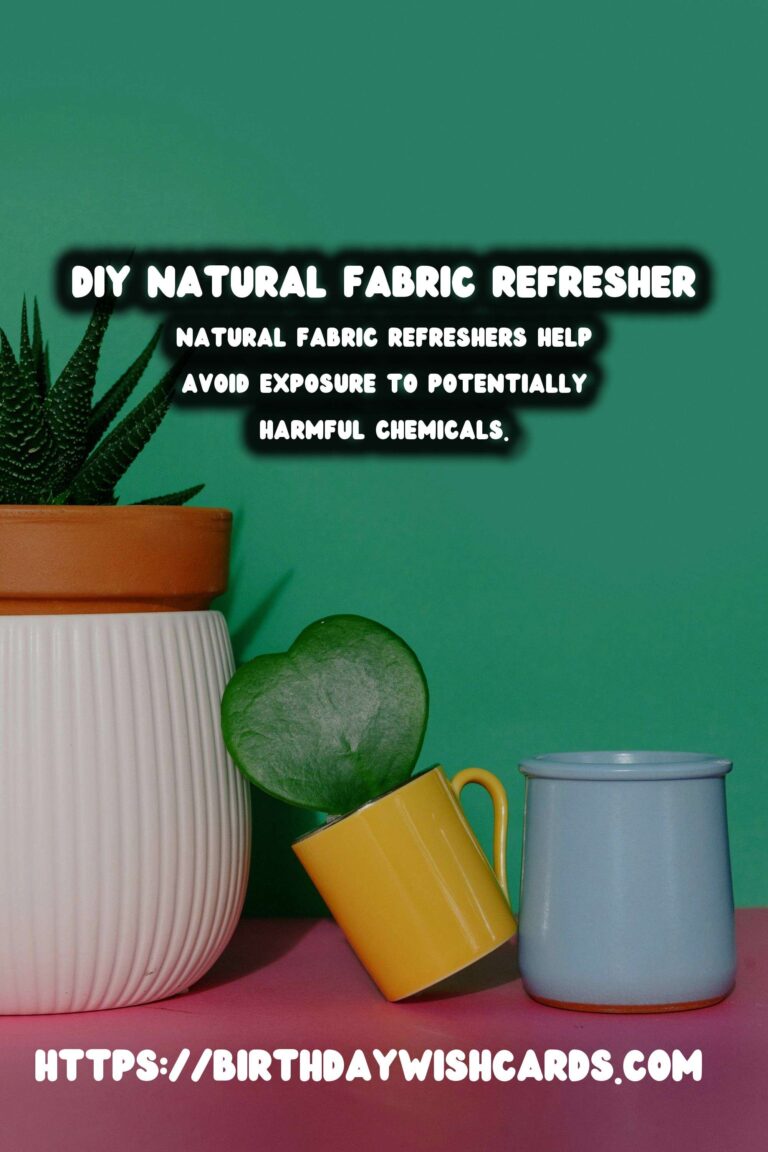
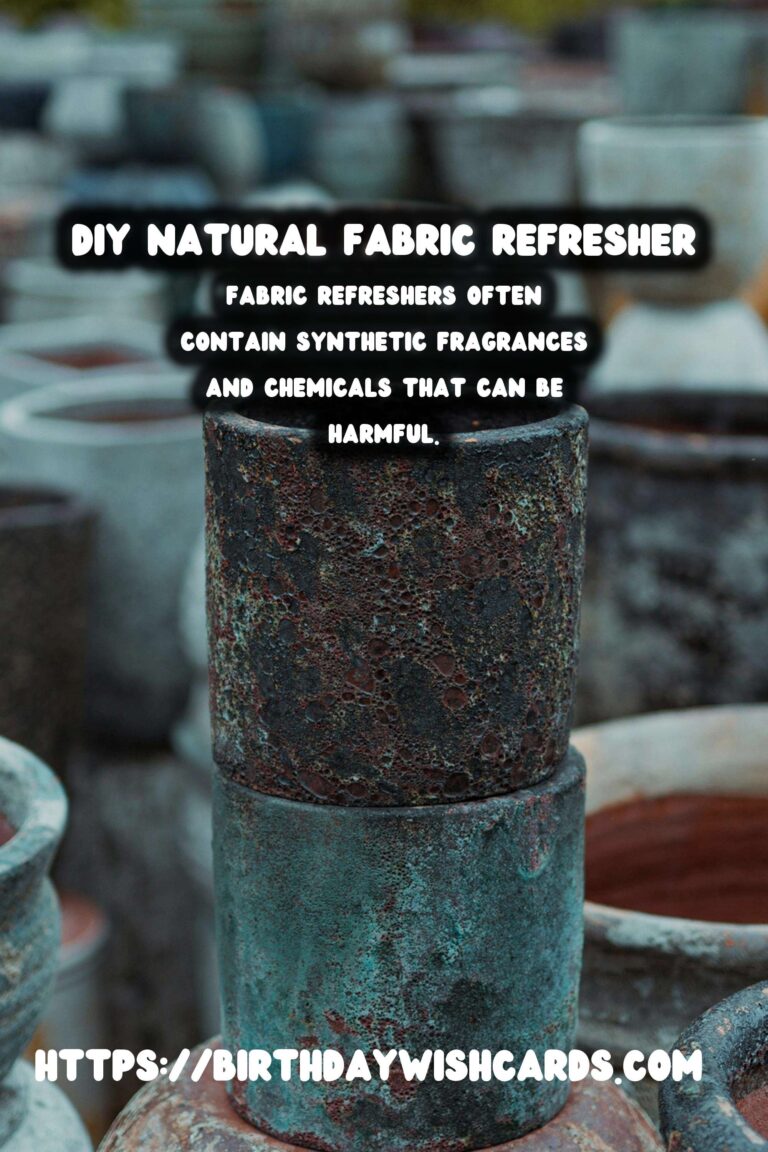

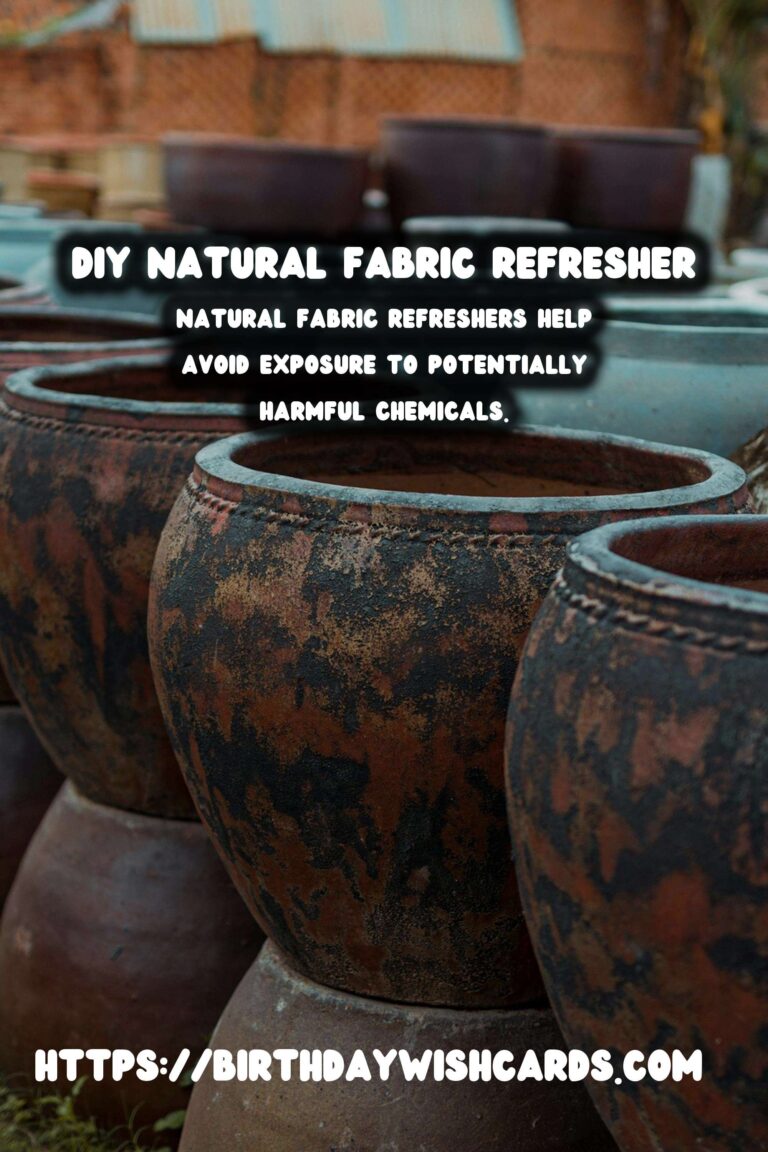
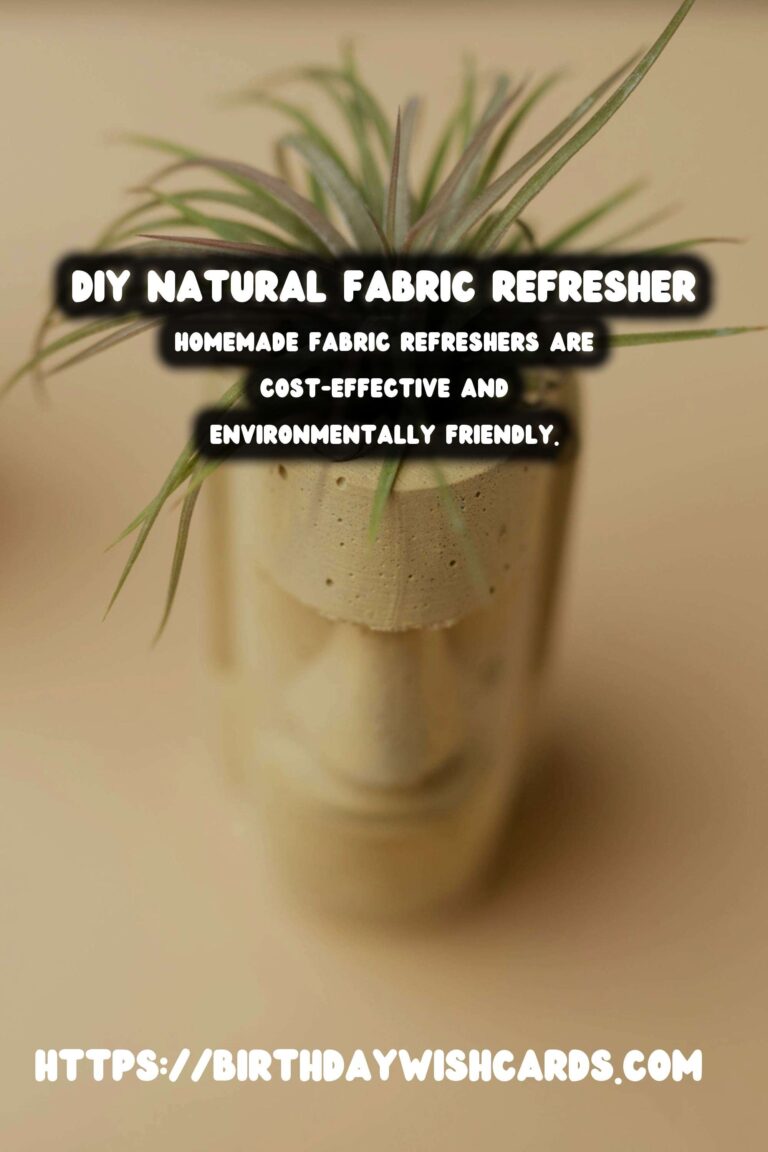

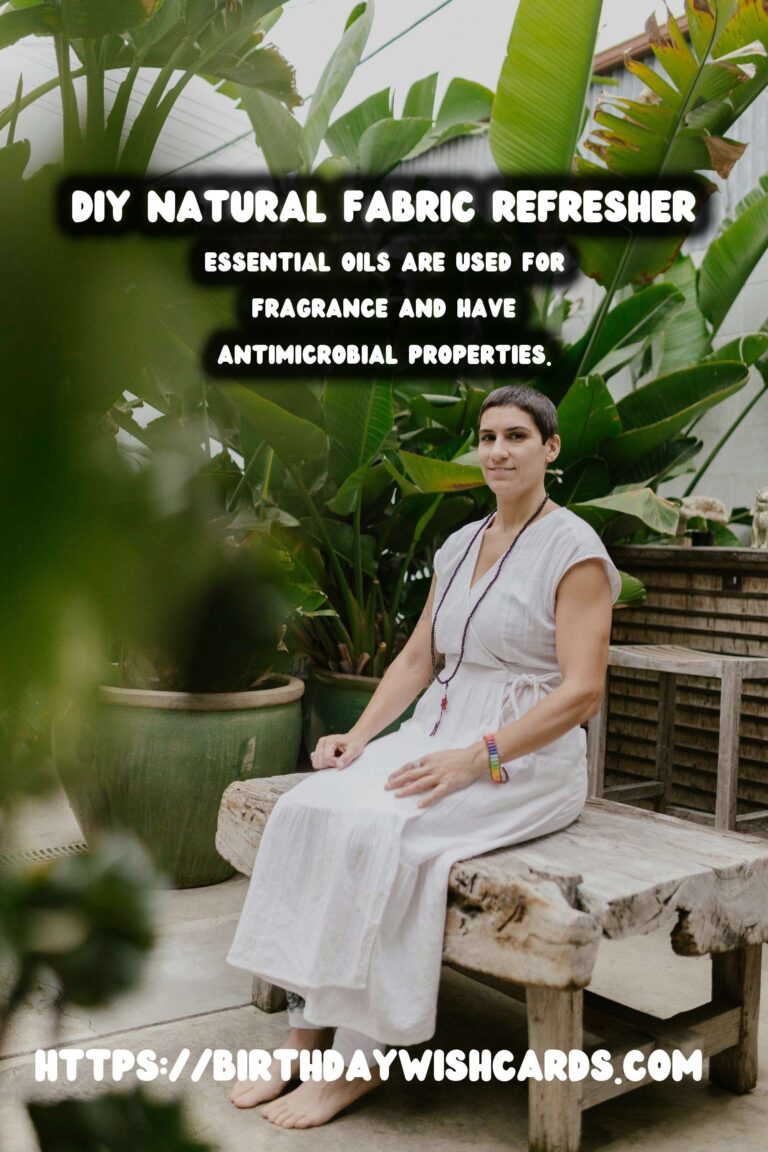


#NaturalLiving #DIY #EcoFriendly #HomemadeProducts #EssentialOils




